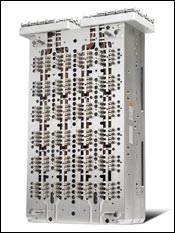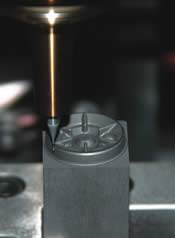Business Strategy
Complex Molds Mean Business for High-Tech Toolmakers
Focus on cavitation and advanced product design gives progressive mold shops a jump on competitors.
Read MoreHow to Better Your Machine Tool ROI
The justification of purchasing a new machine tool is becoming more and more difficult, particularly with today’s technology and global competitive economy. Return on investment (ROI) strategies based on past inefficient manufacturing performance does not represent today’s machine tool technologies. With competitive pressures the way they are, exotic materials and more complex designs, manufacturers need to be smarter, leaner and more profitable. Above all, the challenge of maintaining your competitive edge and generating the fastest possible return of your investment is crucial.
Read MoreNever Say Never
If I think back a few decades, NC machines—the Neanderthal ancestor of CNC—were ignored for tooling applications or one/off prototypes.
Read MoreHigh-Speed Mill Keeps Tight Tolerances, Increases Efficiencies
Busy moldmaker turns to HSM to boost productivity and remain competitive in both the domestic and foreign arenas—and realizes time savings of up to 60 percent.
Read MoreChina’s Shifting Fortunes
The 2008 Summer Olympic Games in Beijing were seen as China’s maturation as a culture, an economy and a global power. They also mark a crossroad for China. Nixon’s historic visit in 1972 set in motion events that would change—and are changing—our world. And not much has changed more in the past 30 years than manufacturing. But, this type of change is never without its challenges, and China is finding itself at a stage of maturity where its trajectory toward manufacturing/economic dominance is slowing down a bit.
Read MoreEveryone Is Welcome
Account managing is the fine art of balancing the needs and expectations of your customer with the skills of your company personnel.
Read MoreThe Custom Manufacturing Megatrend: A New Industrial Revolution
New methods of manufacturing are bringing about fundamental change in the way products are designed and delivered.
Read MoreThe Seven Ds of a Buy-Sell Agreement
My client handed me his 13-year old buy-sell agreement. The business value, specified as a fixed amount, was about 3 percent of the current market value. Any problems here? First, the value is not current and too low. Attempts to enforce the contract would result in litigation. Second, the IRS will not accept the low value for estate tax purposes. Third, since this agreement is not current, the funding for the buyout does not exist. Either the buyer or the company must come up with funding or it’s very likely all or part of the business will have to be sold to a third party.
Read More









